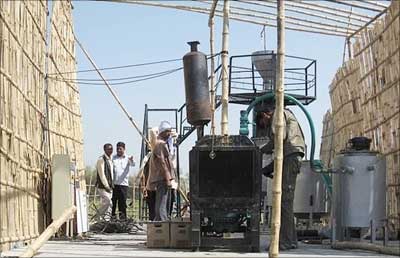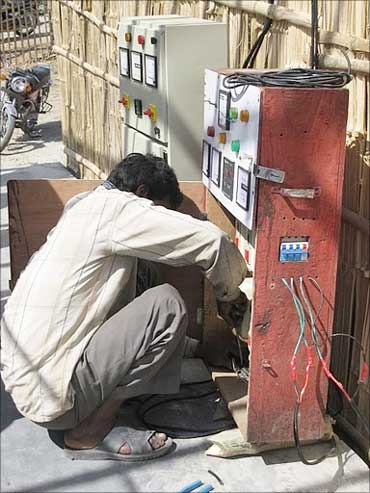
In a few weeks it will be one year since British Petroleum's deepwater drill in the Gulf of Mexico spewed an estimated 206 million gallons of oil into the sea.
In response to this tragedy a group of American writers and intellectuals drafted a 'Gulf Declaration' and addressed it to President Obama and Members of Congress. They began by saying that it will not be enough to make the guilty pay and clean up the mess.

Full energy independence can be created "through accelerated development of clean, renewable, non-polluting, and sustainable energy sources and through vast improvements in energy efficiency."
What are the prospects for such a declaration by citizens in India about our energy future?

What is the basis of making projections for how much energy India needs in the next few decades? What kind of energy efficiencies have, or have not, been factored into these calculations?
How has it been decided that we cannot meet future needs without a massive up-scaling of nuclear power?

So far these questions have been raised by activists and a few professionals in the energy sector.
Given the staggering implications of the crisis at Japan's crippled Fukushima Daiichi nuclear power plant perhaps the event will serve as an impetus for wider public engagement in seeking answers.
There is an urgent need for a multi-stake holder open source enquiry that would look into all dimensions of energy usage, generation and safety. But here are some of the problems such an endeavour would face.
Let us look first at safety.

In an interview to the web journal SciDev, Gopalakrishnan explained that the AERB's safety certificate is worthless since it is 'captive' to the Department of Atomic Energy.
The AERB would have to be independent and technically much stronger before its judgement could carry credibility.
However, the safety status of a particular installation is quite a different matter from the risk evaluation of the technology itself.

A radiation leak can impact people far from the plantsite, its impacts linger to imperil future generations and managing nuclear wastes is an ecological nightmare.
A multi-stakeholder investigation would have to find a formula for measuring the long term human cost of these risks before evaluating the economic merits of nuclear energy in relation to other forms.

At present the framework for such calculations is one-dimensional since it is anchored in the concept of Gross Domestic Product.
New metrics might need to be anchored in a concept like Gross National Happiness which is now being developed by academics and policy makers in some parts of the world.
Similarly, there is need to review the frame of reference for making projections about energy needs.

For example, one study claims that improved efficiency in household appliances could give India annual savings of about 57,000 million units of electricity by 2013.
This means we could avoid generating about 20,000 MW over five years or one ultra-mega power plant per year!
If this sounds over-blown consider some details about ceiling fans a basic appliance whose sales are growing by 10 per cent every year.

For consumers the pay-back period of the additional cost is less than a year while the energy savings last over 15 to 20 years.
A preliminary survey shows that leaving TVs, set-top boxes, computers, AC adaptors etc. on stand-by mode causes a loss of about 2,700 million units per year - a figure that is expected to rise to 5,500 million units by 2013. Yet virtually no effort is being made to tap these savings.

What component of these needs can be met by technologies based on renewable energy is a big question. But here is a small illustration of issues in this area.
Two years ago the Centre for Science and Environment (CSE) reported that Indian sugar mills are generating 2,000 megawatt of biomass-based energy and selling that power to the grid.
There is a potential for sugar mills to turn bagasse, a waste product of sugarcane production, to generate 5,100 mw of power. But lack of policy and pricing issues threaten the growth potential of such green power.
CSE has been lobbying for a stronger policy framework to incentivise green power.

This is partly because it is difficult to make reliable projections about either technology shifts and investment patterns in renewable energy.
But financing is not the key issue in renewable energy, says Girish Sant of Prayas.
The main hurdle is policy "because policy gives much higher tariff for renewable energy (compared to coal or gas). So policy has to make sure that the proposed renewable energy projects ensure cost minimization and appropriate end-use."

Seeking answers needs to be a collective process. That won't happen if competing groups simply push government in one direction or another - such as renewable vs. nuclear.
An open and multi-stakeholder exploration, involving independent experts, bureaucrats, private entrepreneurs and political activists could change this. As public pressure against new nuclear power plants mounts the incentives for such a deep exploration will, hopefully, rise exponentially.